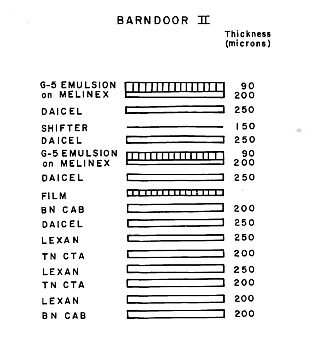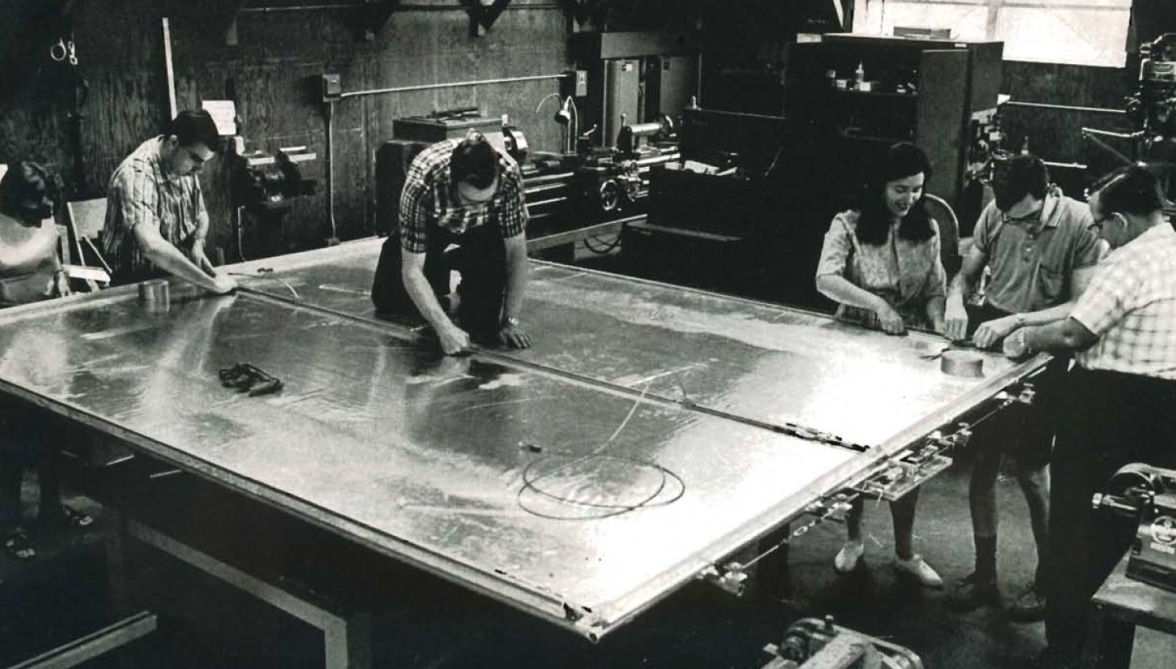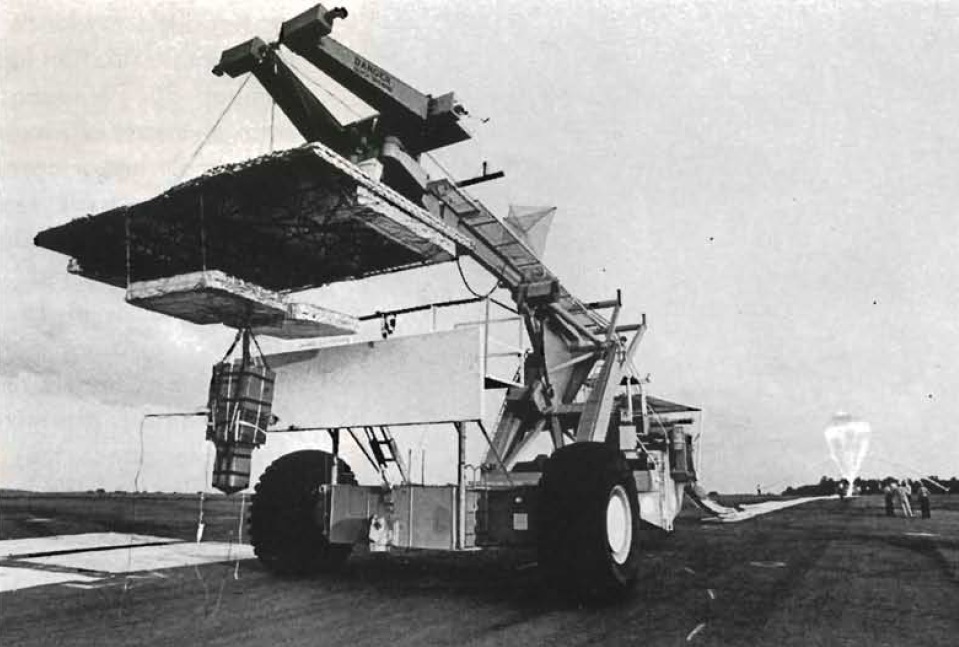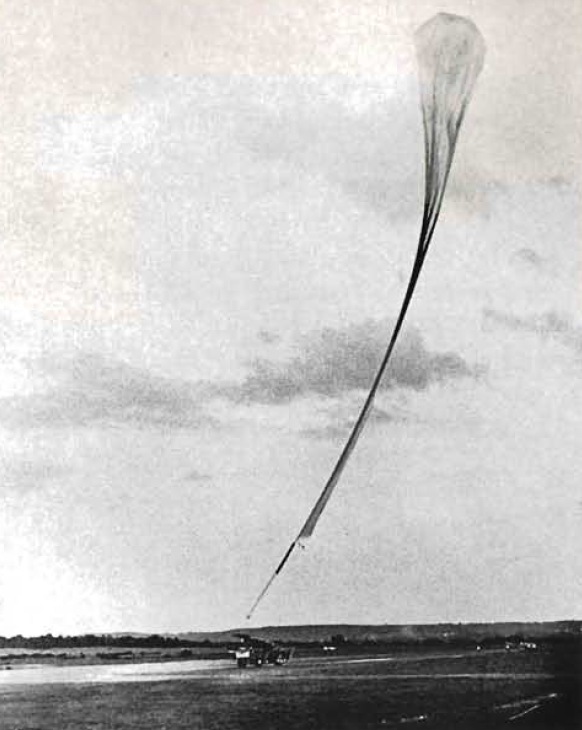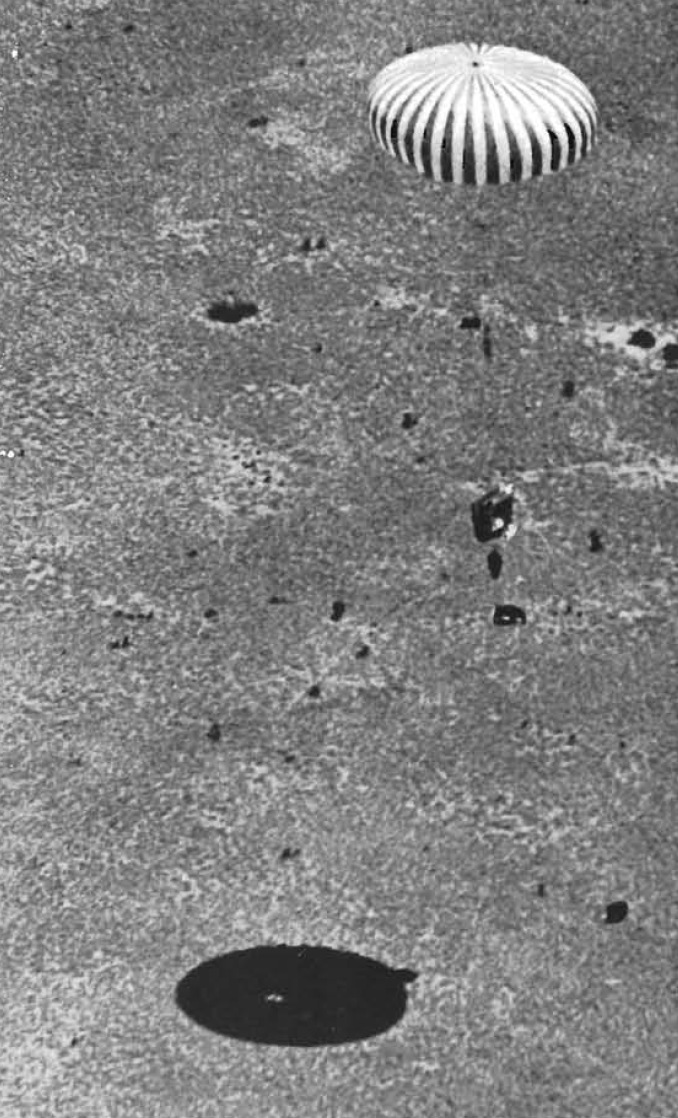Purpose of the flight and payload description
After the surprise produced in the scientific community by the discovery by a Bristol University team in 1966 of that they had identified an uranium nuclei in the tracks left in a nuclear emulsion exposed in the stratosphere using a balloon, the cosmic ray group of the Washington University in St. Louis started their own project to search for heavy particulates in the primary cosmic radiation. The material in the new detector was simply layers of plastic which were sandwiched between layers of nuclear emulsion. The novelty was that the detectors were spread out over an area of more than 100 square feet which led to being baptized with the descriptive name of Barn-Door. The project was carried out with the collaboration of General Electric Co.
At left we can see a diagram of the composition of the basic detector of the Barndoor II emulsion stack. It used the "sandwich" technique of nuclear emulsions and plastic sheets held rigidly together. The stack covered an area of 13.8 square meters of detector, and was composed by three sandwiches of emulsions and plastics. Set A was moved relative to sets B and C when the balloon reached float altitude and also shortly before descent. The different positions were separated horizontally by two inches, and the overall effect was to define, for each track in the 8 layer, different locations in the A layer which thus distinguished between tracks recorded at ceiling and those detected during the balloon ascent and descent.
For those particles which produced detectable tracks in a plastic the corresponding tracks in the adjacent emulsions and other plastics could then be found and the particles studied in both emulsions and plastics. Since different plastics had different charge thresholds for relativistic particles, the existence of a track in a particular plastic provided an immediate indication of a lower limit to its charge. However, since the rate of ionization also depended on velocity, it was essential that the particle be known to be relativistic for this method of charge identification to be valid.
Details of the balloon flight
Balloon launched on: 5/24/1968 at 20:08 cdt
Launch site: Columbia Scientific Balloon Facility, Palestine, Texas, US
Balloon launched by: NCAR National Scientific Balloon Flight Station
Balloon manufacturer/size/composition: Zero Pressure Balloon Winzen 10.600.000 cuft (0.7/0.7 MIL. Stratofilm)
Balloon serial number: SF 305.86-070-NSC-09 SN: 235
Flight identification number: 398P
End of flight (L for landing time, W for last contact, otherwise termination time): 5/25/1968
Balloon flight duration (F: time at float only, otherwise total flight time in d:days / h:hours or m:minutes - ): 14 h 15 m
Landing site: In Fabens, Texas, US
Payload weight: 1157 lbs
Original plan for the flight was to spend 40 hours at float. However, an early termination was neccesary due to trajectory of the balloon toward Mexico. At landing, the parachute did not immediately collapse and package dragged causing damage to gondola framework.
In all fourteen hours of flight were considered successful.
External references
- Identification of tracks of super heavy cosmic rays in plastics 11th International Conference on Cosmic Rays, held in Budapest, 25 August - 4 September, 1969
- NCAR Scientific Balloon Facility Annual Report, 1968 National Center for Atmospheric Research, January 1969
- Observation of Cosmic-Ray Particles with Z>=50 and Interpretation of the Charge Spectrum Physical Review D, vol. 8, Issue 6, pp. 1722
- Observation of Trans-Iron Nuclei in the Primary Cosmic Radiation Phys. Rev. Lett. 23, 338 - Published 11 August 1969
- Primary Cosmic Ray Particles With Z > 35 (VVH Particles). 13th International Conference on Cosmic Rays, held in Denver, Colorado, Volume 1 (OG Sessions)., p.265
- Production and Propagation of Particles with A>81 in the Galaxy Physical Review D, vol. 5, Issue 2, pp. 307
- Study of the Charge Spectrum of Extremely Heavy Cosmic Rays Using Combined Plastic Detectors and Nuclear Emulsions Physical Review D, vol. 3, Issue 4, pp. 815
- The Flying Barndoor Washington University Magazine, Summer 1968, Page 15
4178If you consider this website interesting or useful, you can help me to keep it up and running with a small donation to cover the operational costs. Just the equivalent of the price of a cup of coffee helps a lot.

